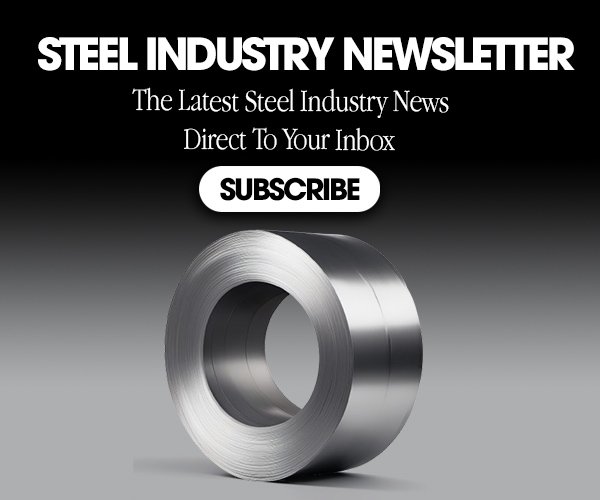The European Union has announced sweeping countermeasures valued at €26 billion ($28 billion) in response to the Trump administration’s decision to impose 25% tariffs on all steel and aluminum imports, effective March 12, 2025. This move marks a significant escalation in transatlantic trade tensions, with the EU vowing to protect its industries and consumers from the economic fallout of what it deems “unjustified” U.S. tariffs 1 4 5. The retaliatory measures, set to take effect in April, target a broad range of American goods, from industrial machinery to agricultural products, and underscore the deepening rift in EU-US trade relations. As global markets brace for disruption, this article examines the rationale behind the tariffs, their economic implications, and the potential for further escalation in a renewed transatlantic trade war.
The EU’s Two-Phase Retaliation Strategy
Reinstating Suspended Tariffs
The first phase of the EU’s response, scheduled for April 1, involves reviving previously suspended tariffs from 2018 and 2020. These measures were originally suspended in anticipation of improved trade negotiations under the Biden administration but are now being reactivated as a direct response to the Trump administration’s refusal to grant exemptions to allies16. The revived tariffs will apply to $10 billion worth of U.S. goods, including steel, aluminum, and agricultural products such as peanut butter and cranberries. European Commission President Ursula von der Leyen emphasized that the EU “must act to protect consumers and businesses” from the destabilizing effects of the U.S. tariffs, which she labeled as “taxes” that disrupt supply chains and threaten jobs15.
New Tariffs Targeting Industrial and Agricultural Sectors
By mid-April, the EU will implement a second wave of countermeasures targeting €18 billion ($19.4 billion) in U.S. exports. This phase expands the scope of retaliation to include industrial machinery, home appliances, wood products, and key agricultural commodities like poultry and beef14. The inclusion of agricultural goods signals a strategic shift, as the EU aims to exert pressure on politically sensitive U.S. sectors. Maroš Šefčovič, the EU’s Trade Commissioner, stated that while the bloc remains open to dialogue, the “unjustified tariffs on our exports will not go unanswered”15.
Global Reactions to Trump’s Tariffs
Australia’s Exclusion and Diplomatic Strain
Despite being a longstanding U.S. ally, Australia failed to secure an exemption from the steel and aluminum tariffs, dealing a blow to bilateral relations. Prime Minister Anthony Albanese criticized the tariffs as “entirely unjustified” but ruled out retaliatory measures to avoid burdening Australian consumers 3 5. This decision highlights the geopolitical tightrope smaller allies face in balancing economic interests with diplomatic partnerships.
Canada’s Near-Miss Escalation
Canada, the largest supplier of steel and aluminum to the U.S., narrowly avoided a tariff hike to 50% after Ontario Premier Doug Ford agreed to suspend a proposed electricity surcharge on U.S. imports. The two nations will now renegotiate terms of the USMCA trade agreement, though President Trump’s assertion that Canada has “abused” trade relationships underscores lingering tensions 4 6.
China’s Firm Retaliation
China, already subject to a 20% blanket tariff on exports to the U.S., announced additional retaliatory measures, raising the total tariff on Chinese steel and aluminum to 45%. Foreign Ministry spokesperson Mao Ning accused the U.S. of violating WTO rules and vowed to defend China’s interests “by all necessary means”45.
Effects on US Consumers, Manufacturing, and Steel Industry
Impact on US Consumers
The implementation of 25% tariffs on steel and aluminum imports is likely to have significant repercussions for American consumers. As the cost of raw materials increases, manufacturers may be forced to pass these expenses on to end-users. This could lead to price hikes across a wide range of consumer goods:
- Automotive sector: Car prices could rise by $2,500 to $15,000 due to the tariffs.
- Home construction: The National Association of Homebuilders warns that increased metal costs will ultimately be borne by consumers through higher home prices 2.
- Household appliances: Products like refrigerators, washing machines, and dishwashers may become more expensive as manufacturers adjust to higher input costs 5.
- Consumer electronics: Devices containing steel and aluminum components could see price increases1.
These price hikes could potentially fuel inflation, reducing purchasing power for American consumers across various sectors of the economy1.
Effects on US Manufacturing
The tariffs present a double-edged sword for US manufacturing:
- Increased input costs: Industries reliant on steel and aluminum as raw materials face higher production expenses, potentially reducing their competitiveness4.
- Job losses: Sectors dependent on affordable metals, such as construction, automotive, oil, gas, and electricity, which collectively employ more workers than US steel mills, may experience job cuts 2.
- Supply chain disruptions: The tariffs are likely to cause uncertainty and disrupt established supply chains, affecting production schedules and costs5.
- Reduced output: A study on the 2018 metal tariffs showed that industries using steel and aluminum experienced a decline in output exceeding $3 billion by 20216.
Impact on US Steel Industry
While the steel industry is the primary intended beneficiary of these tariffs, the effects are mixed:
- Short-term benefits: US steel producers are likely to see increased profit margins and potentially boost production 3.
- Price increases: Domestic steel prices have already surged by over 30% in the past two months in anticipation of the tariffs 6.
- Job creation vs. job losses: While the tariffs may create some jobs in steel production, they risk causing more significant job losses in steel-using industries. A study on similar tariffs implemented from 2002-2003 showed an average annual loss of 168,000 jobs in steel-using industries—more than the total employment in the entire steel sector4.
- Production increase: Based on previous tariffs, US steel production might see a modest increase of around 2% 4.
However, it’s important to note that these benefits may be offset by broader economic impacts. William Oinger, representing a major US aluminum producer, cautioned that the tariffs could result in the loss of 100,000 American jobs, including 20,000 in the aluminum sector itself 6.
The Road Ahead: Negotiations or Escalation?
The EU has left the door open for negotiations, with von der Leyen affirming that the bloc “will always remain open to dialogue”1 4. However, the lack of exemptions and the retaliatory measures’ scale suggest a protracted standoff. As the U.S. and EU account for 30% of global trade, the economic ripple effects could extend far beyond their borders, testing the resilience of the multilateral trading system.
Conclusion: Navigating the Uncertain Waters of Global Trade
The implementation of the 25% tariffs on steel and aluminum imports by the Trump administration, coupled with the EU’s €26 billion countermeasures, marks a significant escalation in global trade tensions. This trade dispute between long-standing allies highlights the complex and interconnected nature of the modern global economy, where actions taken by one nation can have far-reaching consequences across multiple sectors and countries.
Key Takeaways:
- Global Ripple Effects: The tariffs and counter-tariffs are not isolated events but part of a broader shift in international trade dynamics that could reshape global supply chains and economic partnerships.
- Economic Uncertainty: Both the US and EU economies face potential challenges, including inflation risks, job losses in certain sectors, and disruptions to established industries.
- Diplomatic Strain: The tariffs have strained relationships between the US and its traditional allies, potentially impacting cooperation in other areas of international relations.
- Industry-Specific Impacts: While some sectors like US steel production may see short-term benefits, many industries reliant on affordable metals face increased costs and potential contraction.
- Consumer Consequences: Ultimately, consumers on both sides of the Atlantic may bear the brunt of these trade measures through higher prices for a wide range of goods.
Looking Ahead
The path forward remains uncertain. While both the US and EU have expressed openness to negotiations, the scale of retaliatory measures suggests a protracted dispute. The coming months will be crucial in determining whether diplomacy can prevail over protectionism.
As this trade conflict unfolds, it serves as a stark reminder of the delicate balance required in international trade policy. Policymakers must weigh the desire to protect domestic industries against the benefits of free trade and the potential for retaliatory measures that can harm other sectors of the economy.
For businesses and consumers alike, adaptability will be key. Companies may need to reassess their supply chains and pricing strategies, while consumers should be prepared for potential price increases across various product categories.
In an era of increasing economic nationalism, this trade dispute between the US and EU underscores the ongoing challenges to the multilateral trading system. As the situation evolves, it will be crucial for all parties to find common ground that balances national interests with the benefits of open and fair international trade.
The resolution of this conflict—or its potential escalation—will likely have lasting implications for global trade relations, setting precedents and shaping economic policies for years to come. As such, it remains a critical issue for policymakers, business leaders, and citizens around the world to monitor closely.
If you enjoyed this article check out some of our other recent articles on the subject:
- Trump’s 25% Steel Tariffs: Economic Impacts, Industry Effects and Global Trade Shifts
- Nucor Announces Another Price Increase
- Nippon Steel’s Strategic Pivot in U.S. Steel Acquisition Under Trump Administration
- Housing and Construction Market Update: Key Drivers of Steel Demand
- Cleveland-Cliffs and Nucor Announce Price Increases
Be sure to subscribe to the Steel Industry Email Newsletter for the latest steel news direct to your inbox!









